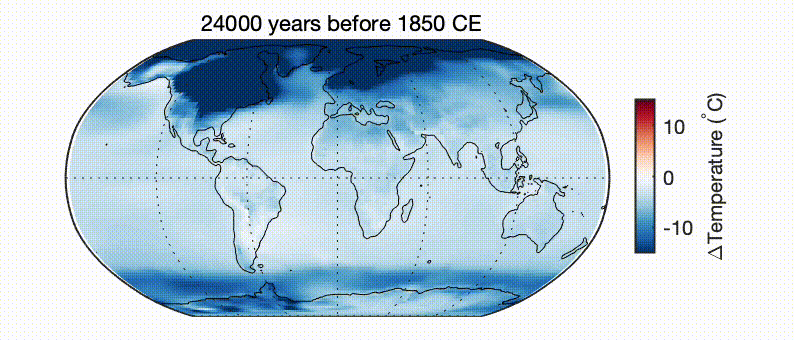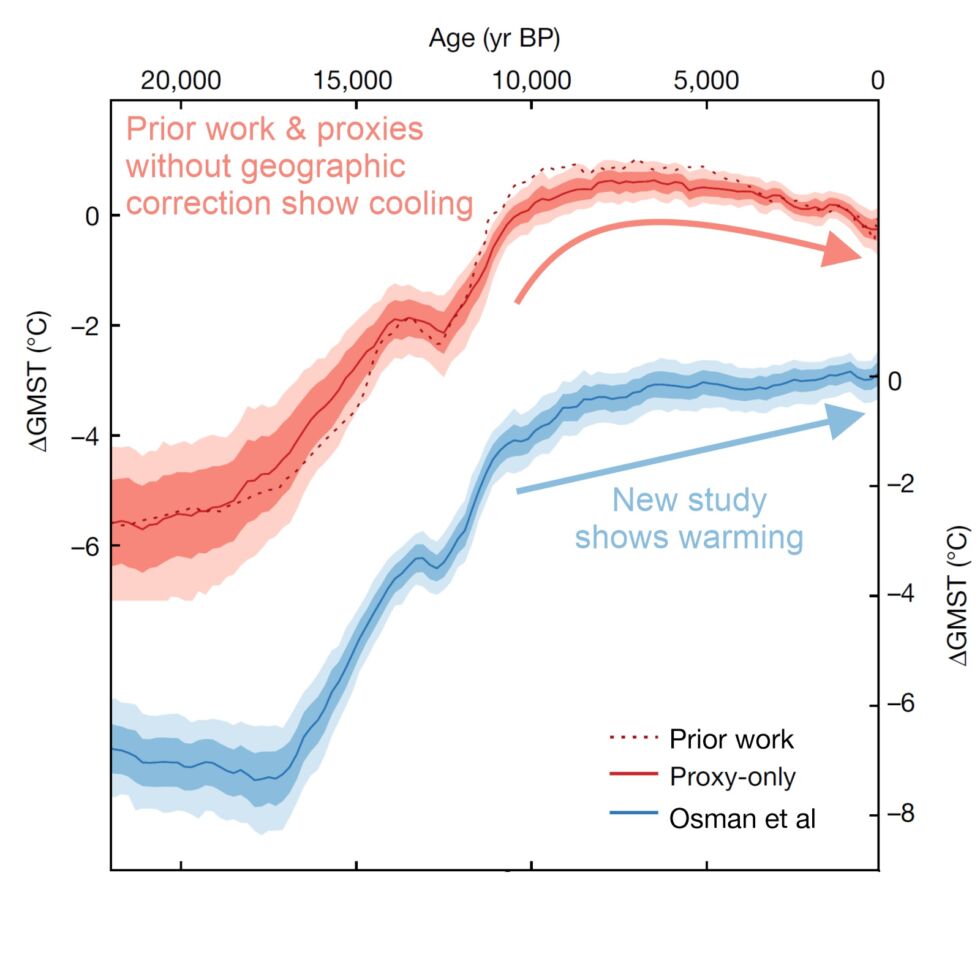
Matthew Osman
The climate “hockey stick” refers to a reconstruction of temperatures over the past 1,000 years. The data shows flattish temperatures over the last millennium, like the handle of a Hockey stick, ending in a “blade” of rapidly rising temperatures since the industrial revolution. The idea first appeared in a paper by Michael Mann and Raymond Bradley of the University of Massachusetts and Malcolm Hughes of the University of Arizona. The work became famous after appearing in a UN climate report, after which it was the focus of climate denial, hacking, defamation, and disinformation, all of which was dramatized in a recent BBC TV drama called “The Trick.”
Today, in a paper published by Nature, scientists show that the “handle” of the “hockey stick” extends back 9,500 years, while its “blade” is taller—the last decade was 1.5° C hotter than the average temperature over the last 11,700 years. “Human-caused global temperature change during the last century was likely faster than any changes during the last 24,000 years,” said lead author Dr. Matt Osman of the University of Arizona.

An animation showing the warming that ended the last ice age.
Matthew Osman
Taking the temperature of times before thermometers
To measure temperatures at times long before the invention of thermometers, scientists must use indirect proxies. For the new study, scientists carefully vetted over 500 proxy records from oceans around the world; the data shows the fossilized remains of plankton and microbes in sediments where the age is known from radiocarbon dating.
Researchers then used statistical methods to calculate sea surface temperatures from the chemical properties of those remains. “We spent seven years developing the models for the different kinds of marine temperature proxies, incorporating knowledge from biology and geochemistry and using the best statistical practice,” explained coauthor Dr. Jessica Tierney of the University of Arizona and leader of the lab in which this research was conducted.
The researchers combined the proxy temperatures with climate model simulations to account for the incomplete geographic distribution of data, and they cross-checked their results with independent records such as ice drilled from polar regions and stalagmites in caves.
Resolving a conundrum
The researchers’ work allowed them to produce maps and graphs of global temperatures as Earth emerged from the last ice age, providing 200-year time slices going back 24,000 years.
The authors find that the ice age was 7° C colder than the preindustrial era, about a degree colder than an earlier estimate had shown. Warming began 16,900 years ago, and by 11,000 years ago, Earth was enjoying a relatively warm “interglacial” climate. These findings refine the details but match the broad outline revealed in earlier work.

Modified from Osman et. al.
But unlike earlier studies, the new work shows that, prior to our current warming, there was a slow, long-term warming of 0.5° C that started 9,500 years ago. It also shows that the “handle” of the climate “hockey stick” is straight, whereas in prior studies, the “handle” was warped, with early warming followed by cooling into preindustrial times.
The new results resolve a disagreement between climate models (which simulated warming) and proxy studies (which showed cooling). The problem was known as the “Holocene Temperature Conundrum.”
Dr. Samantha Bova of San Diego State University, who published a reconstruction of temperatures for the same time period earlier this year, agreed, saying, “Both reconstructions show no evidence for an early Holocene warm period.” She pointed out that her paper used a completely different method, so the fact that her research came to the same conclusion as the Tierney team “leaves little room for doubt that the Holocene was a period of long-term warming,” she said.






